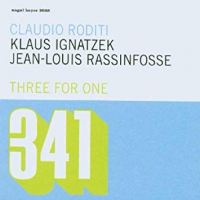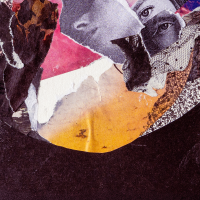Home » Jazz Articles » Swing Set » Benny Goodman: "Sing, Sing, Sing"
Benny Goodman: "Sing, Sing, Sing"
The Paramount
Benny Goodman and his band arrived at the Paramount Theater on the morning of March 3, 1937 to find throngs of students waiting in line. Goodman had assumed that this engagement, which started at 8:30 in the morning and preceded a Claudette Colbert picture, wouldn't be that big of a deal. But when the band appeared on the slowly rising stage playing "Let's Dance," dance they did—all 12,000 of them, spilling out into the aisles, on the bandstand, and anywhere else they could find room. Goodman took the audience through a typical set with all the hits while fans clamored for autographs and snatched up $900 worth of candy. By the time Goodman finished with "Sing, Sing, Sing" at the end of a forty-three minute set, it could be safely said that the Swing Era had begun.The Killer-dillers
The roots of the hot jazz associated with "Sing, Sing, Sing" can be traced back to an earlier performance by Goodman at the Palomar. The current diet of the big band performance was mild pop tunes, which were held to be what audiences favored. But faced with a listless, indifferent crowd, Goodman turned to the band and said something like, "To hell with it, if we're going to sink, we might as well go down swinging," and launched into "King Porter Stomp." The crowd went wild, and from that point on, the medium tempo, "sweet" numbers took a back set to the "hot" numbers, what arranger Jimmy Mundy called the "killer-dillers." Mundy was recruited from the Earl Hines orchestra to pad out the Goodman book and write he did: he created more than four hundred charts during the three years he was with the band. While he could handle the pretty melodies, his most lasting contributions to the band were the high-octane, intense instrumentals that were intended to generate excitement within the crowds. "Killer-dillers" like "House Hop" and "Swingtime in the Rockies" helped establish the template for the jump tunes that after Goodman every band had to include in their book, but the most famous of them all was "Sing, Sing, Sing.""Sing, Sing, Sing"
"Sing, Sing, Sing" is probably the most famous tune associated with Goodman, if not the entire Swing Era. However, it was originally a tune written by Louis Prima, and did feature vocals as the title suggests. Thus when it was imported into the band, it was originally intended as a feature for singer Helen Ward. However, the talented instrumentalists in the band kept changing it in performances, adding new passages and quotes from other songs like Chu Berry's "Christopher Columbus" to the point where it bore little resemblance to the original. But the most recognizable part of the song is Gene Krupa's drumming, which exists as a motif throughout the song. Ward recalls that one night Krupa refused to stop drumming when he got to the end of the third chorus and Goodman picked up his clarinet and soloed right along with him. The tune continued to morph in this fashion until it reached a length of eight minutes and filled both sides of a 78.The Record
"Sing, Sing, Sing" bristles with energy and reckless abandon, all powered by Krupa. There isn't much organization or development of themes at all, but it was capable of whipping crowds into a frenzy every time it was played. The record begins with the tom-tom drumming of Krupa that forms the bedrock of the piece. The band enters and plays the familiar head with the reeds and horn tossing the melody back and forth. Goodman comes in for a brief solo with the horns punctuating his swinging phrases, which then gives way to a restatement of the drum theme. For the rest of the first side the band trades riffs with each other, the trumpets slowly building to a crescendo with the reeds darting and gliding. Krupa interjects at the end of each passage with a few measures of drum fills adding new accents to the basic pattern. On the last of these, Krupa takes his longest solo (Goodman seems to start his solo on accident before Krupa restates the theme, but he also does it at the Carnegie Hall Concert) before the full band comes in to bring the piece to the end of the first section. The second half of the piece (and Side Two of the 78) begins with a solo from Vido Musso backed by Jess Stacy and Krupa while the rest of the band quietly fans the flames from the back. Musso's wide vibrato and rhythmic kicks are followed by a brief Goodman solo under which the band builds to a growling crescendo. Another solo for Krupa, then a solo by Harry James backed solely by the rhythm section, who ever so gracefully builds to a bristling climax joined by the rest of the section, who then drop out while James deftly finishes off with a few high notes. To finish the piece, Goodman solos again, backed only by Krupa. Goodman's solo features some intelligent reworking of the melody and an almost sinister tone, yet not lacking in sophistication. Goodman and Krupa fade out as the solo develops. A cowbell signals the return of the full band, and Krupa's fiery press roll leads to the climax.Gene Krupa
"Sing, Sing, Sing" made good use of the ferocious energy of Krupa, who was the showman of the band. A whirl of arms, hair, and chewing gum, Krupa knew how to work a crowd and cater to the audience. As pianist Jess Stacy related to Whitney Balliett, "Gene was our salesman, our showman, and he worked hard. You could wring water out of his sleeves when he finished a set." Quite naturally, then, "Sing, Sing, Sing" became a showcase for the drummer. Unfortunately, it also pointed to the trouble brewing in the band. The first to depart was Harry James, who suffered from anxiety from having to perform an over the top solo on "Sing, Sing, Sing" at the end of every night. He tried to convince Goodman to move it to the beginning of the show, but he refused. The pressure eventually caused James's departure.The Split
But there was even more trouble between the leader and his drummer. Goodman grew weary of the loud, crazy music that he was forced to play, due in large part to Krupa's showmanship. He wanted his music to be appreciated on its own terms, not because of the theatrics involved, and wanted to avoid the uproar at his concerts that often drowned out solos. Goodman also resented the fact that when kids came for autographs, they rushed past him to get to the exuberant drummer. Eventually the tension erupted into squabbling on the bandstand, and shortly after the famous Carnegie Hall concert, Krupa tore up his contract and departed to form his own group. His new band specialized in the killer-dillers that Goodman was trying to put behind him, and he recruited Mundy to provide the dynamic arrangements (Musso was also a member of the band). Their debut in Atlantic City was a success, as Krupa called off one bombastic number after another, but the luster began to fade. One critic commented: "'it is not difficult to get a large outfit to pound and blare'but in a short time it becomes oppressive and monotonous." Fortunately, once the fad for killer-dillers was over, Krupa found the key to success in Anita O'Day and Roy Eldridge, who helped him make some excellent records in the forties. For his part, Goodman recruited Dave Tough as Krupa's replacement, a more modest, reserved man who was reluctant to take solos.Coda
"Sing, Sing, Sing" illustrates the tension that always exists between being an artist and being an entertainer. Goodman was forced to play this tune at the conclusion of every show, yet wanted appreciation for the sophistication of his artistry. Krupa, on the other hand, preferred to feed off of the youthful exuberance of the crowd. Many sided with Goodman—Gunther Schuller in The Swing Era writes about the "horrors" of the tune and Krupa's "rigidly relentless pounding"—but there was one moment where the tune achieved a brief moment of sublime elegance. At the Carnegie Hall concert, after the usual theatrics, Jess Stacy was allowed to solo and, given the venue, what followed was appropriate. Used to just playing rhythm on the tune, he was unprepared for a turn in the spotlight, but what came out of his fingers was a graceful, impressionistic marvel with classical flourishes, yet stll managed to swing. It was the best thing he ever did, and it's ironic that such a layered, nuanced performance came at the end of such a chaotic, bombastic tune.Tags
PREVIOUS / NEXT
Support All About Jazz
 All About Jazz has been a pillar of jazz since 1995, championing it as an art form and, more importantly, supporting the musicians who make it. Our enduring commitment has made "AAJ" one of the most culturally important websites of its kind, read by hundreds of thousands of fans, musicians and industry figures every month.
All About Jazz has been a pillar of jazz since 1995, championing it as an art form and, more importantly, supporting the musicians who make it. Our enduring commitment has made "AAJ" one of the most culturally important websites of its kind, read by hundreds of thousands of fans, musicians and industry figures every month.

























